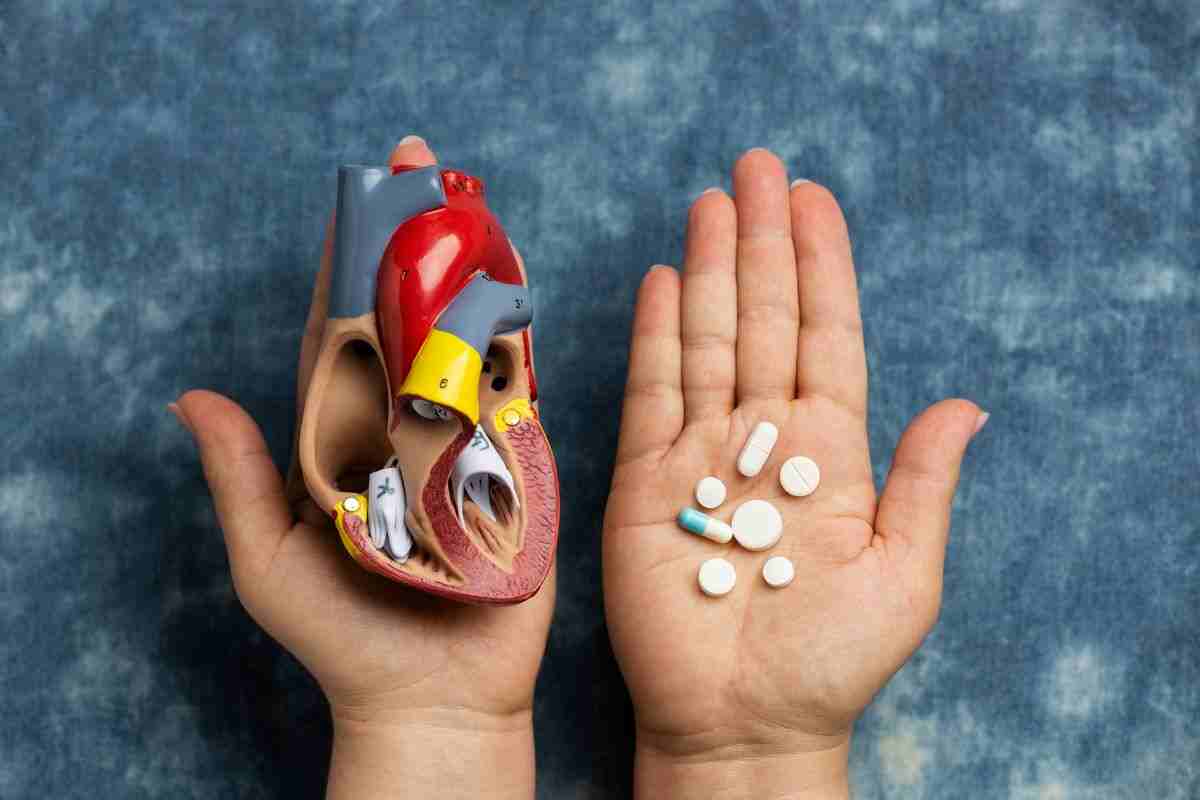Statins, also known as lipid-lowering drugs, are a popular class of medications prescribed in the United States. When examining the most commonly prescribed drugs in the country, Atorvastatin stands out as the most frequently prescribed Statin. Simvastatin also ranks among the top prescribed medications.
Throughout history, statins have faced scrutiny from the media, often highlighting the negative aspects of statin treatment. In this article, we will explore the pros and cons of statins to provide a comprehensive overview of their pros and cons.
Additionally, we will delve into various aspects of statin treatment, including side effects, effectiveness, and more, to offer a well-rounded evaluation of the benefits and drawbacks associated with statins.
In this blog
ToggleWhat Are Statins?
Statins are a group of drugs that reduce “bad” cholesterol levels, known as low-density lipoprotein (LDL) cholesterol. Over time, LDL cholesterol significantly contributes to the narrowing and hardening of blood vessels, specifically the arteries. This narrowing of the arteries can lead to severe conditions, including:
- Atherosclerosis is the blockage of arteries.
- Heart attacks occur when the blood supply to the heart is interrupted.
- Strokes which happen when the blood supply to the brain is restricted.
- Angina is characterized by chest pains caused by inadequate blood supply to the heart.
- Coronary heart disease, which involves restricted blood flow to the heart.
Cardiovascular disease, encompassing conditions such as heart attacks, angina, and heart failure, is one of the leading causes of death in the United States.
The Legal Classification Of Statins and Availability
In the United States, statins are classified as prescription medications. This means they can only be obtained with a valid prescription from a licensed healthcare professional, such as a doctor or a nurse practitioner. A prescription is necessary to purchase statins from a pharmacy.
The availability of statins in the US is strictly regulated to ensure patient Safety and appropriate use. Patients need to consult with their healthcare provider, who will assess their medical history, perform necessary tests, and determine the proper statin medication, dosage, and duration of treatment.
While statins are not available over the counter in the US, various statin medications are approved by the Food and Drug Administration (FDA) and widely prescribed by healthcare professionals. These include Atorvastatin, Simvastatin, rosuvastatin, and others. The specific Statin prescribed may depend on the patient’s cholesterol levels, cardiovascular risk factors, and potential drug interactions.
Statins: Pros And Cons
Statins Pros
Statins machenism
Reduction of cardiovascular disease and strokes. Statins are the most effective lipid-lowering drugs. Statins lower LDL cholesterol effectively and thus reduce the risk of developing or progressing cardiovascular disease as part of primary and secondary prevention.
Lowering LDL cholesterol reduces the risk of coronary death, ischaemic stroke, myocardial infarction (heart attack), and revascularization (CCT, 2012).
Statins produce an anti-inflammatory effect.
Cardiovascular diseases, for example, atherosclerosis (build-up of fats and cholesterol in arteries), are characterized by chronic inflammation. Many studies confirmed that Statins produce anti-inflammatory effects, contributing to more beneficial treatment (Jain & Ridker, 2005).
Statins produce an anti-thrombotic effect.
Statins may help to prevent blood clot formation by different means. Statins were also found to help destroy blood clots (Pinal-Fernandez et al., 2018).
Statins produce a pleiotropic effect.
The pleiotropic effect is an umbrella term that describes the benefits of Statins that go beyond a lipid-lowering result, for example, improving endothelial function (endothelium forms inside the lining of the arteries) and decreasing oxidative stress and inflammation.
High cholesterol weakens the endothelium, which promotes atherosclerosis, characterized by a build-up of fatty materials in arteries, which restrict the blood flow and may result in clot formation.
The effect of Statin on endothelium is a complex topic. Statins improve the function of the endothelium by lowering cholesterol. It is proposed that Statins produce an antioxidant effect and increase nitric oxide production, bringing additional benefits in the process (Liao & Laufs, 2005).
Statins – Cons
The second part of the stains’ pros and cons section may seem more lengthy and detailed. I reviewed certain risk factors with Statin therapy more thoroughly to diminish any misunderstandings associated with Statin therapy.
Muscle toxicity (including myopathy and rhabdomyolysis)
All Statins can cause muscle toxicity. However, the increased risk is observed in individuals taking a higher dose of stains or in certain patients, for example (BNF, 2021):
- A family history of muscle illness
- Previous episodes of muscle toxicity
- High alcohol consumption
- Reduced performance of kidneys (renal impairment) and
- Hypothyroidism
Patients at higher risk of muscle toxicity should typically have a blood test to determine creatine kinase levels (CK). CK indicates muscle injuries and muscular disease. Statin therapy should not be initiated if CK is too high (five times more than the upper limit). Some individuals, for example, ‘muscly’ people, may have elevated CK due to increased muscle in the body.
Rhabdomyolysis, the destruction of muscle cells, is the most severe side effect of Statins, which may cause kidney failure and even death. Rhabdomyolysis is not a common side effect. A large study (252,460 patients) investigated several rhabdomyolysis cases in patients taking lipid-lowering drugs (Atorvastatin, Pravastatin, or Simvastatin).
The average incidence of rhabdomyolysis was 0.44 per 10,000 person-years, which means 0.44 people out of 10,000 people experienced rhabdomyolysis during observation for a year (Graham et al., 2004). A more recent review of clinical trials estimated that only about 2-3 individuals per 100,000 patients who take Statins might develop rhabdomyolysis and acuter renal (kidney) failure (ibid).
The frequency of Statin-related myopathy (muscle pain, muscle weakness, cramps, and tendon pain) was found to be slightly higher. Another large study set myopathy incidence at 1.2 per 10,000 person-years (Gaist et al., 2001). Taking certain drugs alongside Statins increases the risk of myopathy (see the next paragraph).
Statins – interaction with other drugs
Like other drugs, Statins can interact with other medicines when taken simultaneously. Taking certain medications with Statins simultaneously, for example, fibrates, increase the risk of rhabdomyolysis (see above).
A typical interaction seen in community pharmacy involves Statins and some antibiotics, such as erythromycin or clarithromycin. Simvastatin is usually recommended to avoid combining both drugs.
For Atorvastatin, patients are typically asked to suspend taking medicine for the duration of antibiotic treatment. The list of drugs that interact with Statins is much longer. Speak to your GP or pharmacist if you are unsure about the treatment with Statins.
Can Statin cause diabetes?
Many studies investigated and reported an increased risk of diabetes development in patients on Statins. The exact mechanism is not known; multiple factors are proposed.
However, the increased risk of diabetes is narrowed to individuals already at risk for developing diabetes (Robinson, 2015). Overall, the increased risk of Statin-related diabetes is most likely unimportant because reducing cardiovascular risk outweighs any potential negative impact of the treatment with Statins (ibid).
Can Statins cause liver disease?
Liver function tests are usually performed before the initiation of Statins and occasionally after the treatment commences. Several reasons can impact the level of transaminases, for example, a ‘fatty liver or alcoholic liver disease. The use of statins is cautioned in patients who drink alcohol a lot or have a history of liver disease.
Statins can temporarily increase the level of certain chemicals called transaminases without any symptoms present. The frequency of liver damage caused by Statins is estimated at 1% (Gillett et al., 2011). However, liver complication caused by Statins varies between studies, with some reporting liver complications of sporadic frequency. The Federal Drug Administration (FDA) said severe, Statin-caused liver disease in the US is sporadic (ibid).
Can Statins cause stroke?
Statins may increase the risk of intracerebral hemorrhage (a type of stroke) in patients who previously had a stroke. A study that investigated over 500,000 patients over ten years concluded that during the first six months of therapy, patients on Statins had a similar risk of intracerebral hemorrhage to patients without treatment.
However, after six months of the treatment, patients on statins had a lower risk of stroke. Overall, this study suggested that statins reduce the risk of intracerebral hemorrhage in patients who had not had this type of stroke before (Ribe et al., 2019).
On the contrary, some reports suggest that Statins may increase the risk of hemorrhagic stroke. However, this risk is outweighed by an apparent reduction of ischaemic stroke (another type of stroke) and a decrease in other cardiovascular events and death caused by a blood clot (CTT, 2012).
Bad Reputation
To a certain degree, Statins have a ‘bad reputation. Over the years, mainstream media picked on various aspects of Statin therapy, with tabloids often being the best in dramatization or the worst in delivering clear, unbiased information.
Dose timing
Some Statins, for example, Simvastatin, must be taken at night. This is because Simvastatin stops cholesterol synthesis, which happens at night. Atorvastatin, the most common Statin, can be taken during the day, making this disadvantage less critical.
What Are Side Effects Associated With Statin Therapy?
Side effect profile differs between each Statin. Atorvastatin (the most common Statin in the UK) can commonly cause the following side effects (BNF, 2021):
- Epistaxis (nose bleeds)
- Hyperglycaemia (increased sugar level)
- Hypersensitivity (allergic reactions)
- Joint disorders
- Laryngeal pain (pain in the larynx)
- Muscle complaints
- Nasopharyngitis
- Pain
Additionally, the following common side effects are listed in the licensing information for Atorvastatin (eMC, 2019):
- Headache
Constipation, diarrhea, flatulence, dyspepsia, nausea - Abnormal liver function tests
- Increased blood creatine kinase
Who Needs To Take Statins?
Patients who are considered for Statin therapy need to have a blood sample taken to determine total cholesterol levels, high‑density lipoprotein (HDL) cholesterol, non‑HDL cholesterol, and triglycerides (fat).
Statins can be prescribed for patients as primary or secondary cardiovascular disease (CVD) prevention. Primary prevention describes treatment to prevent a health condition from happening.
For example, in terms of CVD, this usually means preventing heart attack or stroke. Secondary prevention describes treatment aiming to prevent further disease progression, for example, reducing future episodes of heart attacks in individuals who have had a heart attack.
Statins are usually recommended as primary prevention in individuals who (NICE, 2020):
- The estimated risk of developing cardiovascular disease is 10% or more in the next 10 years. Risk is based on an assessment called QRISK.
- Type 1 diabetic patients aged over 40 who have had diabetes for more than 10 years have other risk factors for developing cardiovascular disease or have diabetic neuropathy.
- Have chronic kidney disease or high cholesterol runs in the family
Secondary prevention with Statis is considered in patients who (ibid):
Patients with cardiovascular disease, for example, those with a heart attack, angina, mini-stroke, or peripheral arterial disease.
Final Words From AzDrug
Statins are a practical class of drugs that reduce cholesterol and any possible cardiovascular events and stroke. A review of around 57000 patients from various clinical trials, which took place between 1994 and 2008 – concluded that Statins reduce ‘all-cause mortality (death), significant cardiovascular events (for example, a heart attack) and revascularisations with no ‘excess’ of side effects (Taylor et al., 2013). Although treatment with Statins can be associated with muscle problems when treated in the community. Muscle side effects have rarely been reported in clinical trials.


